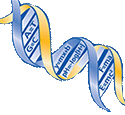Cal Teach inspires future math and science teachers
Kayla Bui knows her math skills could land her a lucrative job in the business world when she graduates from UC Riverside, but that's not where she's heading.
"I came to UC Riverside knowing I wanted to teach," she said. "With math you could go into business or accounting, but I think that would be boring."
Thanks to the Cal Teach initiative, Bui was able to test-drive a teaching career by interning in geometry and algebra classes in a Riverside high school. Those classroom experiences and the special Cal Teach courses solidified her desire to become a teacher. When she graduates, Bui, now a sophomore, plans to enter a UC Riverside master's in education program where she can concurrently earn a math credential. That's exactly the kind of outcome the University of California and California State University had in mind when they launched Cal Teach in 2005.
Shortage of qualified teachers. The initiative has a goal of producing 1,000 new math and science teachers a year to address a critical shortage in credentialed math and science teachers. According to a July report from the Center for the Future of Teaching and Learning, 62 percent of California eighth-graders and 95 percent of 11thgraders scored below proficient in Algebra I standardized testing in 2007. About 32 percent of the teachers assigned to middle school algebra classes do not have a math credential, the institute found.
In California high schools, teachers without an appropriate subject credential taught 12 percent of the math classes in 2005-06. Teachers working outside their credential taught 20 percent of physical science classes and 11 percent of life science classes. The shortage of qualified math and science teachers will get worse as one-third of the state's teachers is expected to retire by 2017. In an economy heavily dependent on science and technology, California faces a real shortage of adequately prepared workers.
UC attacks the problem. The Cal Teach initiative, in its fourth year, is picking up steam. In fall 2008, the nine UC undergraduate campuses had 548 students enrolled in 41 Cal Teach classes. That's the highest number since the classes began in winter 2005 with 84 students.
Some UC Cal Teach students will decide to get their credentials at a CSU, private university or out of state because of cost or personal situation, but UC still does its part in delivering qualified teachers, said Patrick Callahan, executive director of the UC Science and Mathematics Initiative.
Teachers get start at UC. Among the students who earned math credentials in California in 2006-07, he said, 28 percent earned their math degree from a UC. Among those credentialed in science last year, 32 percent earned an undergraduate science degree from UC.
"We need to wait to see if the seduction Cal Teach offers is working to get the students all the way through the pipeline," said UC Riverside biology professor Bradley Hyman, who is the campus Cal Teach faculty director.
 |
| Kristine Arquero (left), shown with two of her science students, is already teaching high school. |
Early results. Although the full impact of Cal Teach won't be known until next year when students who joined the program as freshman begin to graduate, some Cal Teach participants are already teaching.
Kristine Arquero took Cal Teach classes her senior year as a chemistry major at UC Berkeley. She interned in an Oakland Technical High School physics class. She has been a high school chemistry teacher in the South Bronx since Sept. 2, working on an emergency credential while earning a master's and teaching credential at Lehman College. And she's firing up her students in more ways than one.
"This high school is 4 years old, and this is the first time they've turned on the Bunsen burners," Arquero said, demonstrating the difference a rigorously prepared science teacher can make.
She teaches in one of the poorest district in the region, and she's the sixth science teacher many of the students have had. Getting them excited about chemistry is a challenge, she said, but she puts what she learned from her Cal Teach classroom experiences to work.
"I got my science from UC Berkeley," said Arquero. "But I got the teaching from Cal Teach, and I got the support from Cal Teach."
Program instills dedication. It's a hard sell convincing talented engineering, math and science majors to consider teaching. Those students can find many high-paying opportunities in industry, Hyman said, and teaching isn't valued as a prestigious profession.
"I think we're trying to appeal to the humanity within," he said. "As a teacher you impact 100 or more students a day. It's a generational legacy you'll influence."
Students receive a stipend for their hours in local schools, and Cal Teach counselors give them individual support in making decisions about graduate school. Even those students who decide not to pursue teaching are making an impact, serving as role models and valuable classroom tutors. Some of them may decide to teach after having careers in industry, Hyman said, and the program is building strong relationships with local school districts throughout the state.
"I don't think I would be as committed to teaching without the program," said Kristen Simester, who will graduate in December with plans to enter the UC Riverside credential master's program.
The biology major has logged in hundreds of hours in local schools learning from mentor teachers and having a chance to teach lessons.
"I chose biology as a major because I absolutely love everything about it," she said. "I found teaching was an awesome way to get all my knowledge out there. Every student deserves a great education. Hopefully through my knowledge of the content area, they can get one."
Donna Hemmila is the editor of Our University.
